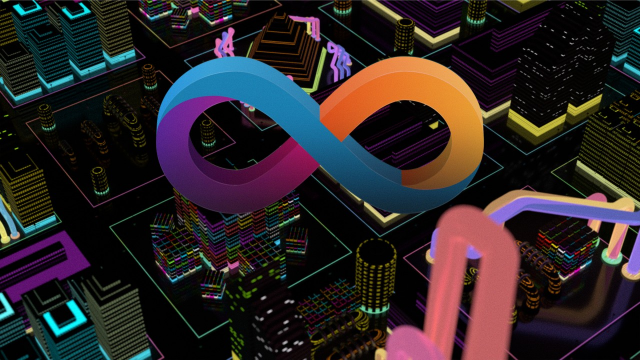
Internet Computer (IC) is an innovative blockchain platform, and its token ICP plays a vital role in the entire ecosystem. In order to better understand the governance and token economics of ICs, it is necessary to have a deep understanding of the supply situation of ICPs. This article will discuss in detail the token economics, total supply, circulating supply and staking mechanism of ICP.
Overview of ICP Token Economics
ICP is a utility token for the Internet computer blockchain. Its main uses include the following aspects:
Node provider rewards: Node providers who provide computing and storage infrastructure for the Internet computer blockchain will receive ICP rewards. Each node provider receives a fixed monthly reward calculated in fiat currency and paid in ICP tokens. This model ensures the stability of node running costs, and rewards vary slightly based on the node’s geographic location to achieve a wider geographic distribution of nodes. Rewards are paid out by minting new ICP tokens, leading to inflation.
Governance: ICP token holders can stake (lock) their tokens to create neurons. Holding Neurons enables them to secure voting rights through the Network Nervous System (NNS), IC’s on-chain open governance system. NNS enables Neuron holders to vote on proposals related to upgrading the IC protocol, adding new node providers, creating new subnet blockchains, etc. Neuron holders receive rewards from the IC protocol for participating in the voting process and helping with governance, and these rewards are also paid through the minting of new ICP tokens, resulting in inflation.
Computing/storage fuel: Container-based smart contract calculations running on the Internet computer blockchain are driven by "Cycles". These Cycles are obtained by burning ICP tokens, similar to "gas" on Ethereum. However, Internet computers use a "smart contract payment" model, that is, the container smart contract pre-charges the cycle, so that the contract can pay the computing cost by itself, reducing the user's burden. The burning of Cycles leads to deflation.
Transaction/Proposal Fees: When any ICP holder transfers their ICP from one wallet to another, they incur a small transaction fee paid in ICP. In addition, ICP holders are also required to pay a small fee when submitting new proposals to NNS. These fees are burned as part of the transaction, causing deflation.
Total supply and circulating supply of ICP
The total supply of ICP is the sum of all tokens currently in the system (regardless of whether they are locked or staked). The total supply changes over time due to inflation and deflation. Its current value can be viewed on the IC Circulation page of the IC dashboard.
Cyclessupply
Cycles supply is the difference between total supply and non-Cycles supply. The non-circulating supply is the sum of all funds in accounts and Neuron controlled by the DFINITY Foundation, plus funds in Seed rounds and ECT Neuron. Seed rounds and ECT Neurons are in the vesting program, with more likely to enter dissolution each month. Regardless of the actions of the Seed Round and ECT Neuron Controllers (for example, they may decide to increase the dissolve delay or stop the dissolve), funds that can theoretically be paid out according to the vesting schedule enter the Cycles supply. At the end of the vesting program, all Seed and ECT funds will become part of the circulating supply. The current circulating supply can be viewed on the IC Circulation page of the IC dashboard.
Staking ICP
The staked ICP supply is the sum of all tokens locked or dissolved in Neuron and earning rewards at any given time. Currently, there is a minimum 6-month lock-up period to accumulate voting rewards. The total amount of ICP staked changes over time, and its current value can be viewed on the Neurons page of the IC dashboard.
Inflation and deflation mechanisms
NNS mints ICP tokens for two main reasons:
Paying out staking rewards: Voting rewards are generated by minting ICP, although this minting only occurs at the moment rewards are generated, maturity is merged, or neurons are allocated. The voting reward rate program is designed with a goal of 90% of the token supply being staked in Neurons. In the first year, NNS allocates 10% of the total supply to generate voting rewards. As the network stabilizes, the distribution rate decreases quadratically until it reaches 5% in the 8th year.
Node Provider Rewards: Node providers are rewarded for running the node machines that power computers on the Internet.
NNS destroyed ICP tokens for the following three main reasons:
Minting cycle: used to cover calculation and storage costs. Dapp and smart contract developers pay computing and storage costs on a periodic basis. Cycles are obtained from NNS by converting ICP to Cycles, and Cycles will burn the converted ICP.
Transaction Fees: Transferring ICP across accounts incurs a transaction fee of 0.0001 ICP, which is burned.
Failed NNS proposal: 1 ICP is required to submit the proposal. If the proposal passes, 1 ICP will be returned to the proposer. If the proposal is rejected, 1 ICP is destroyed.
Historical factors affecting Cycles supply
Network computer blockchain is the result of years of unremitting research and development. The DFINITY Foundation is a major contributor to network computing, with more than 200 full-time members. Over the past few years, the foundation has raised funds through three major rounds of financing and distributed ICP tokens to the community in the form of airdrop events. Neuron unlocking has been the largest contributor to Cycles supply since Genesis.
Conclusion: The design intent of ICP token economics is to create a self-sustaining ecosystem that balances storage and computing costs paid by developers, rewards from node providers, and voting rewards. By understanding the supply mechanism and token economics of ICP, we can better understand the operating principles and governance model of network computers. Changes in the total supply and circulating supply, as well as the operation of the staking and reward mechanisms, are constantly affecting the market performance and value of ICP.